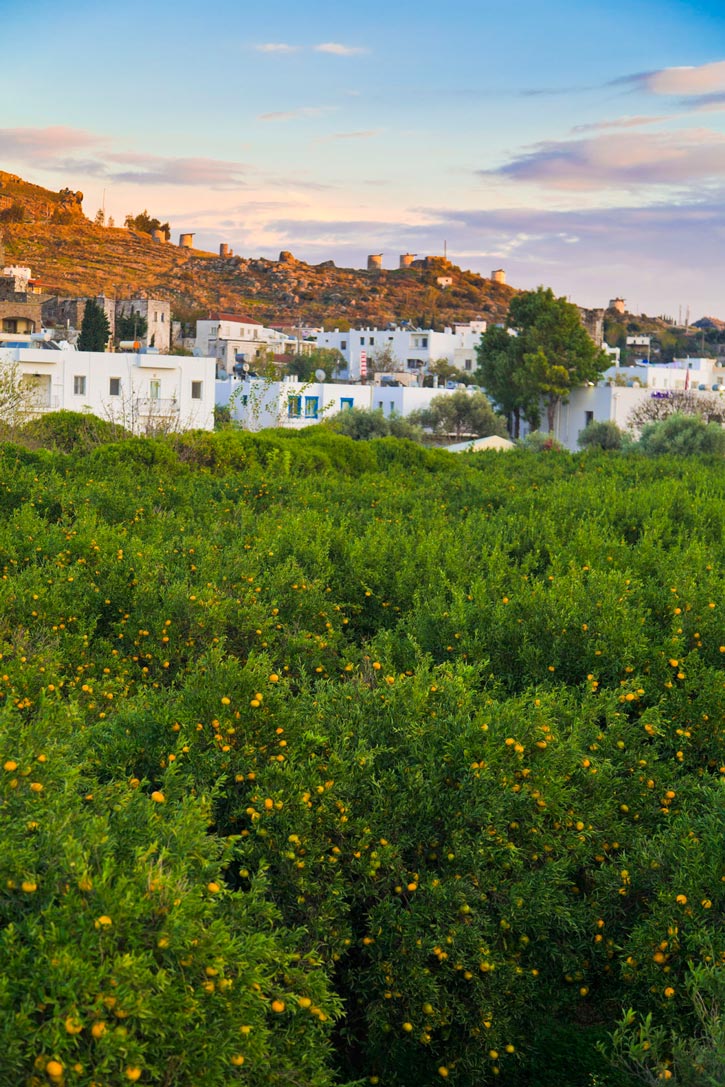You may be surprised to learn that tulips originate in Turkey, not in Holland. Turkey is the original home of other showy blooms, including crocuses, snowdrops, and lilies. Other indigenous plants that grow in various parts of the country include figs, apricots, cherries, sour cherries, almonds, hazelnuts, chickpeas, and lentils.
Turkey is one of the few countries in the world to be self-sustaining in food production and still makes exports.Anatolia is one of the world’s pantries, with plants that have been cultivated for human and animal sustenance since prehistory. Two of those crops are wheat and barley, for which Turkey, along with its neighbors to the east, has become one of only four of the world’s gene centers for the cultivated grain used agriculturally. More than 30 species of disease-and weather-resistant wheat, for instance, still grow wild on the Anatolian plateau. Over time, ideal genes will be transferred from the gene centers to various cultivars around the globe, preserving the species and retaining its quality. Aside from indigenous crops, Anatolia’s climate enables the cultivation of many nonnative species, as in Antalya, where kiwifruit, native to northeast Asia, now thrive. Turkey is one of the few countries in the world to be self-sustaining in food production and still makes exports.

A citrus orchard in Bodrum, Turkey. Photo © Engin Korkmaz/123rf.
While 27 percent of Turkey’s territory is forested, the remainder is home to seven species of cultivated trees, none more important that the olive, allegedly indigenous to Anatolia and which accounts for huge orchards and a billion-dollar industry. The wild maple, sycamore, bay laurel, pistachio, Turkish hazel, Cretan date palm, lime, and showy Judas trees are all indigenous to the Anatolian plateau.
Turkey’s coasts are lush with vegetation. The Aegean and Mediterranean coasts host a multitude of species that thrive in the Mediterranean climate. Popular plants include showy oleanders, fuchsias, hydrangeas, jasmines, wisterias, and magnolias; fragrant bushes like rosemary, thyme, oregano, lavender, and juniper; imposing forests of oaks, pines, and cypresses; and fruit trees like lemons, oranges, and bergamots.
Want to know more about Turkey’s native species? Check out this article: “Wildlife Native to Turkey“.×
Excerpted from the Second Edition of Moon Istanbul & the Turkish Coast.
